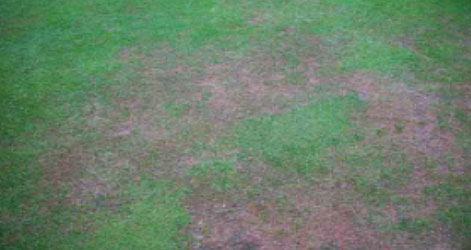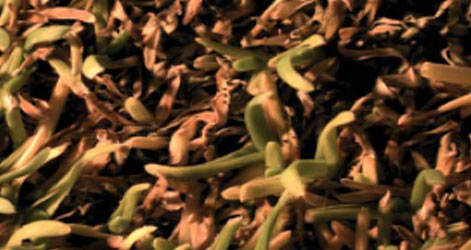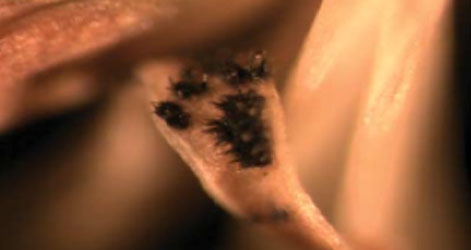Anthracnose Solutions
Anthracnose foliar blight and basal rot caused by Colletotrichum cereale are primarily diseases of Wintergrass and Creeping Bentgrass greens under stress conditions. Read on to find out more about Anthracnose and how to overcome it.
Overview
The problem
Anthracnose foliar blight and basal rot caused by Colletotrichum Cereale are primarily diseases of Winter Grass and creeping Bentgrass greens under stress conditions. The disease is most common on putting greens and most often occurs mid-summer under hot conditions or in autumn through spring under cold, wet conditions. Foliar blighting develops on older leaves first and is most common in the summer. Basal Anthracnose can develop from foliar blighting or independently during periods of cold, wet weather. Since it often occurs when turf growth potentials are low, recovery from anthracnose can be difficult.
What to look for
Symptoms develop as irregular patches of chlorotic turf that progress to a bronze to orangish colour in advanced stages of the disease. Areas start off as patches a few inches in size and can coalesce into larger blighted areas. Black Acervuli with hair-like setae are distinctive signs of Anthracnose; mycelia are not produced on the outside of the plant. Acervuli can be found on the older senescent leaves first, but can be present on green tissue in advanced stages of disease. Plants affected by basal rot have a black discolouration of the stems and crowns; Acervuli may not be present when the disease develops under cold conditions.
The solution
Anthracnose is a stress disease that must be managed by promoting plant health, such as following sound agronomic practices and timely use of preventive fungicide programs. A comprehensive best management plan has been recently published by Murphy et al. (Golf Course Management May 2012) based on five years of national research. Key cultural controls include:
- (i) adequate spring and summer nitrogen (N) with 4.9 to 7.3 kg N/ha applied weekly in the summer months
- (ii) frequent sand topdressing
- (iii) watering at 60–80 per cent base evapotranspiration
- (iv) keeping mowing height above 3.2 mm and using rolling and double mowing to maintain green speeds and
- (v) using regular plant growth regulator applications to control plant size and seed head development.
Fungicide resistance is a problem for Anthracnose; QoI and benzimidazole fungicides may not provide adequate control due to resistance but other fungicide classes remain effective for Anthracnose control. Preventive fungicides should be applied prior to periods of plant stress; these include applications in summer and in cold conditions when stress is expected. Summer preventive programs should start when average soil temperatures at a 5–10 cm depth are 18–20°C and should be maintained through autumn aerification.
The key Envu solution for anthracnose is Dedicate® Forte Stressgard Turf Fungicide. StressGard Formulation Technology products can help improve turf quality under conditions that promote anthracnose.
 |
 |
 |
Anthracnose symptoms on annual wintergrass (L), individual plants showing foliar blight (C), acervuli on older leaves (R). Photos by Dr Frank Wong, Bayer CropScience. As of Oct 4th 2022, the Environmental Science division of Envu was divested. Note that this content was produced prior to separation.
Technical Information
| Solution1 | Rate | Application Interval |
| Dedicate Forte Stressgard Turf Fungicide | 3.5 L/ha | Apply on a 14-28-day spray interval when conditions are favorable for disease development. Use the shorter spray interval under high disease pressure or for curative treatment. |
See fungicide labels for complete details. Always read and follow label instructions carefully.
To find out more information about our products and services, reach out to our team.
